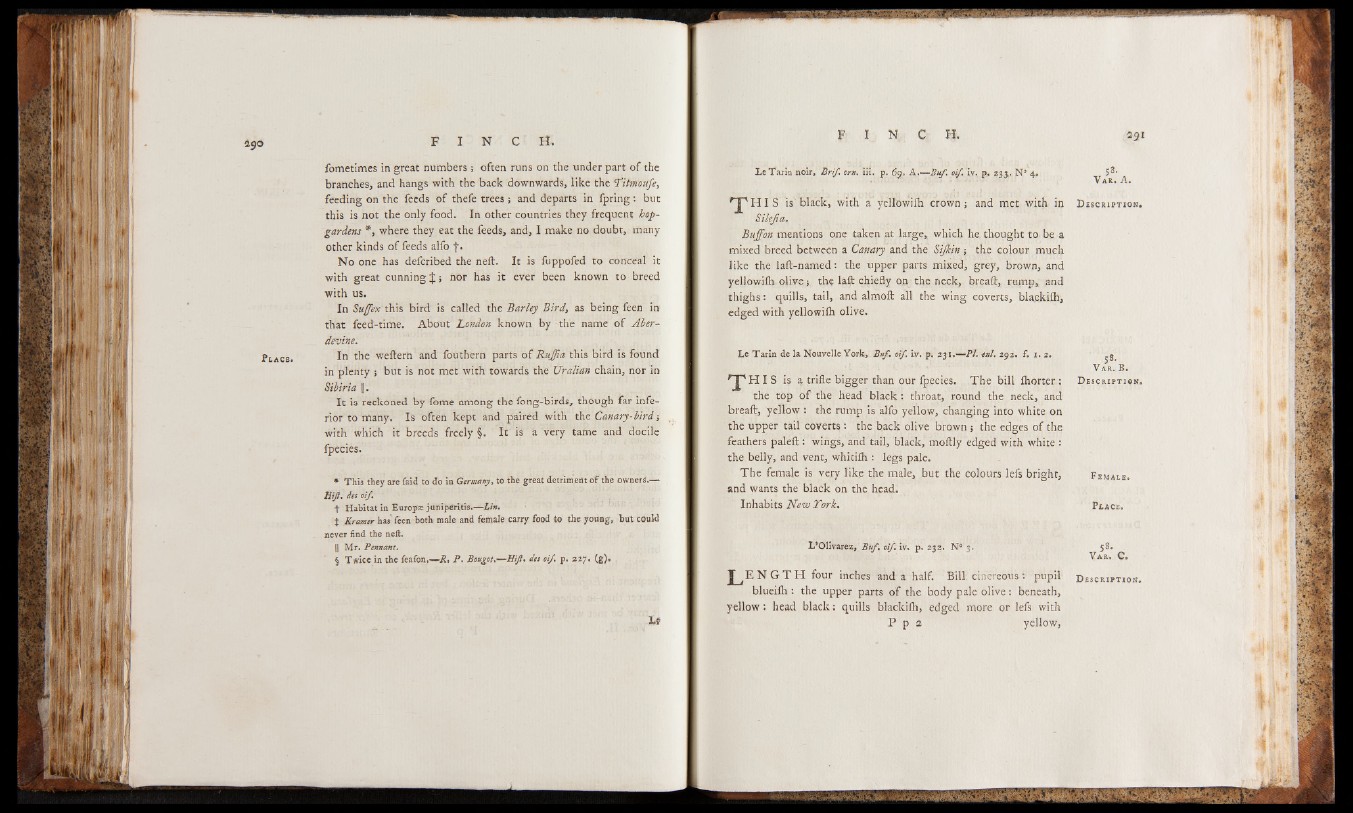
P lace.
fometimes in great numbers ; often runs on the under part of the
branches, and hangs with the back downwards, like the Titmoufe,
feeding on the feeds of thefe trees 5 and departs in fpring: but
this is not the only food. In other countries they frequent hopgardens
*, where they eat the feeds, and, I make no doubt, many
other kinds of feeds alfo f .
No one has defcribed the neft. It is fuppofed to conceal it
with great cunning £ j nor has it ever been known to breed
with us.
In Suffex this bird is called the Barley Bird, as being feen in
that feed-time. About London known by the name of Aberdevine.
In the weitem and fouthern parts of RuJJia this bird is found
in plenty ; but is not met with towards the Uralian chain, nor in
Sibiria ||.
It is reckoned by fome among the fong-birds, though far inferior
to many. Is often kept and paired with the Canary-bird;
with which it breeds freely §. It is a very tame and docile
fpecies.
* This they are laid to do in Germany, to the great detriment of the owners.—
Hiß. des oif,
+ Habitat in Europe j-uniperitis.— Lin,
J Kramer has* feen both male and female carry food to the young, but could
never find the neft.
|| Mr. Pennant.
§ Twice in the feafon,— R% P. Bougot.<—Hiß* des oif, p. 227. (g).
u
LeTarin noir, Brif. orn. iii. p. A .— Buf. oif. iv. p. 233.. N° 4»
* jp H I S is black, with a yellowilh crown j and met with in
Silefia.
Buffon mentions one taken at large, which he thought to be a
mixed breed between a Canary and the Sijkin; the colour much
like the laft-named: the upper parts mixed, grey, brown, and
yellowilh olive; the la£t chiefly on j the neck, bread:, rump, and
thighs: quills, tail, and almoft all the wing coverts, blaekilh,
edged with yellowilh olive.
Le Tarin de la Nouvelle York, B'.f. oif. iv. p. 231.— PI. ini. 292. f. 1.2.
' J ' H I S is a trifle bigger than our fpecies. The bill Ihorter:
the top of the head black: throat, round the neck, and
bread:, yellow : the rump is alfo yellow, changing into white on
the upper tail coverts : the back olive brown 5 the edges of the
feathers palefl:: wings, and tail, black, moftly edged with white :
the belly, and vent, whitilh : legs pale.
The female is very like the male, but the colours lefs bright,
and wants the black on the head.
Inhabits New Tork.
L’Olivarez, Buf. oif. iv. p. 232. N° 3.
T E N G T H four inches and a half. Bill cinereous: pupil
blueilh : the upper parts of the body pale olive: beneath,
yellow: head black: quills blaekilh, edged more or lefs with
P p 2 yellow,
g g j l JBB
58.
V ae. A.
D escription» ÉM ’ ÉH Wm
1 f / m t
' 111
m
m
W M
*"
V ae. B. 1 m m
D escription.
n Æ
58.
V ar. C.
D escription,
mk
m m mm
ig
tl§|; $ fP $
|BF
!ém
HÜ